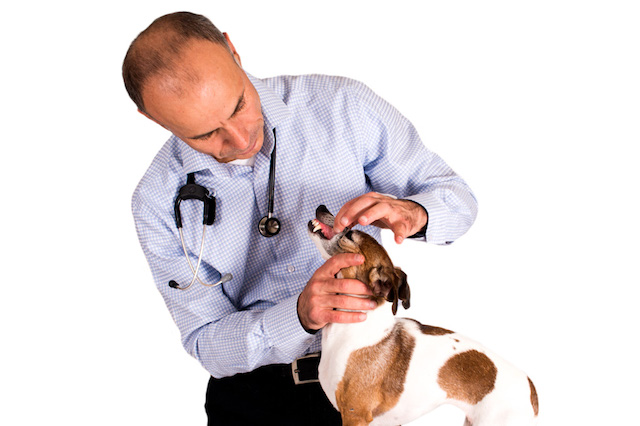Dog Care | Dental Care
You Pet Counts On Your Proper Care
With major innovations in treating serious infections and other pet illnesses, oral health has become the number 1 health problem for dogs. It’s estimated that 8 of 10 dogs will develop oral health issue by age three without proper dental care. With your help, your pets can live a life with healthy teeth and gums.
You Simply Need To Start With A Few Things:
- Proper Diet
- Chew Toys
- Regular Brushing At Home
- Yearly Trips to the Vet For Dental Check Ups

Good Dental Health Starts At A Good Diet
The wrong kinds of food can cause dental problems in dogs. Feeding your dog dry food rather than wet food, though mildly abrasive, helps remove bacterial plaque that can harden into tartar. Dry food also provides good chewing exercise and gum stimulation. Avoid giving your dog sweets and table scraps as these may also cause plaque and tartar buildup. Your vet may recommend the use of special dry foods, which are designed to reduce plaque and tartar accumulation. This is a good option if your dog is prone to dental health issues.
How To Brush Your Dogs Teeth
Dogs need to have their teeth brushed manually in order to eliminate harmful plaque and tartar formation. You should begin a regular, daily habit of brushing when your dog is a puppy. Even older dogs can be trained to accept having their teeth cleaned. You simply need to introduce the activity to them gradually and make the experience as stress-free and positive as possible. Reassure your pet and reward good behavior with treats.
Here’s How It Can Be Done:
- Step 1:
Start by dipping your finger in beef bouillon for dogsRub this finger gently over the dog’s gums and over one or two teeth. Repeat this until your dog is comfortable with the activity. - Step 2:
Gradually, introduce a gauze-covered finger and gently scrub the teeth in a circular motion. - Step 3:
Then, when you feel comfortable, you can begin to use a toothbrush, either an ultra-soft model designed for people, or a special pet toothbrush. These can be rubber finger covers with bristles on the end. Ask your vet for more information. - Step 4:
Finally, once your pet is used to the routine, introduce the use of toothpaste in liquid or paste form.
Most of these contain chemicals like chlorhexidine or stannous fluoride – ask your vet for more information. Do not use human toothpaste, it will upset your dog’s stomach. Your vet can recommend a pet-friendly toothpaste. They also might advise using an antiseptic spray or rinse after brushing.

Yearly Dental Check Up
Doing your best to ensure that your dog receives proper diet and brushing at home will ensure their teeth and gums stay in excellent condition. To provide optimum care at home, you need to start at a clean bill of health. That’s where yearly dental check-ups come in. He will give your dog a thorough examination of the entire mouth to determine any underlying problems there might be, especially plaque and tartar buildup. Tartar cannot be removed by brushing alone, and requires professional attention. These kinds of procedures are usually done under anesthesia. After removing tartar from the gums, your vet might treat your pet’s teeth with fluoride and provide instructions for further home care.
Tips:
- Chew treats, including hard meat-protein biscuits can help remove plaque and stimulate the gums.
- Watch out for wood – sticks and drift wood can have splinters which result in pain and gum damage.
- Don’t let your pet chew on hard materials like bones or rocks. They can wear down teeth, even break them, damage gums and cause infection.
